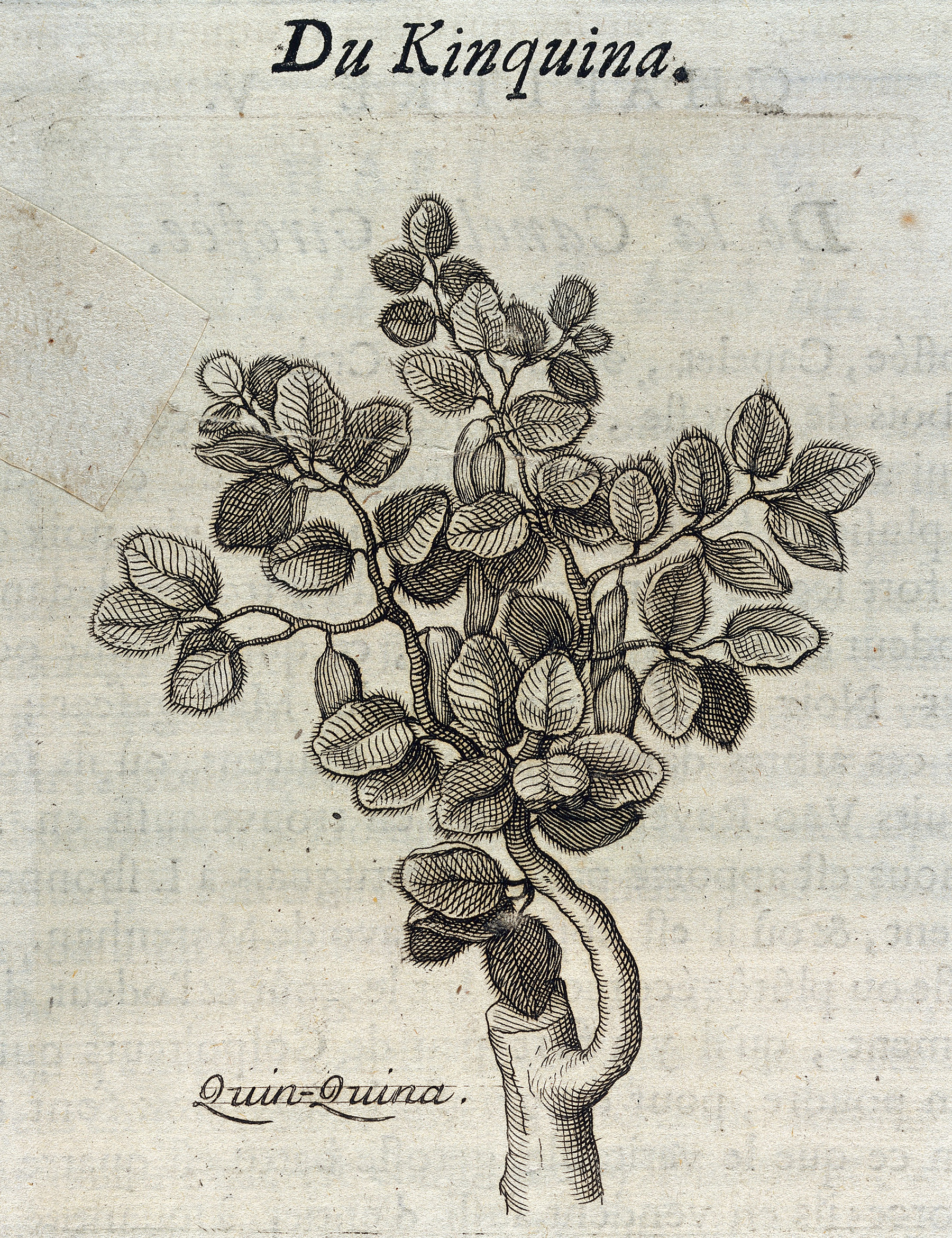Andean knowledge of cinchona bark was also vital to efforts that led to the identification of quinine, the plant alkaloid that gives cinchona bark its effectiveness in treating malaria. The technical achievement of isolating quinine in Europe built upon the prior technical achievement of knowing how to transform tree bark into an effective medicament.
European efforts to identify the active principle of cinchona bark intensified in the 18th century in response to increased trade and advances in the chemical analysis of plants. In the 1790s, French chemist Antoine François de Fourcroy (1755–1809) conducted a systematic chemical analysis of cinchona bark, isolating a red, resinous substance that had some alkaline chemical properties. Ultimately, his efforts proved ineffective in the treatment of malaria. In 1811, Bernardino António Gomes, a surgeon in the Portuguese navy, isolated a crystalline substance that he called cinchonine. However, he did not recognise the alkaline nature of the material. Then, in 1820, two French pharmacists, Pierre Joseph Pelletier and Joseph Bienaimé Caventou, determined that the substance isolated by Gomes was a mixture of two alkaloids, one of which they called cinchonine and the other quinine.
QUININE
Image of cinchona labelled as ‘Kinquina’ [Quinine] from Pierre Pomet, Histoire generale de drogues, 1694 (Wellcome Collection; CC BY).
Matthew James Crawford
Further reading
- Boumediene, S. (2016) La colonisation du savior: une histoire des plantes médicinales du ‘Nouveau Monde’ (Vaulx-en-Velin: Éditions des Mondes à faire).
- Camino, L. (1992) Cerros, plantas, y lagunas ponderosas: la medicina al norte del Perú (Piura: CIPCA).
- Crawford, M.J. (2016) The Andean Wonder Drug: Cinchona Bark and Imperial Science in the Spanish Atlantic, 1630–1820 (Pittsburgh, PA: University of Pittsburgh Press).
- Headrick, D. (1981) Tools of Empire: Technology and European Imperialism in the Nineteenth Century (New York, NY: Oxford University Press).
- Kaufman, T.S., and E.A. Rúveada (2004) ‘The quest for quinine: those who won the battles and those who won the war’, Angewandte Chemie, vol. 25, 854–85.
- Philip, K. (1995) ‘Imperial science rescues a tree: global botanic networks, local knowledge and the transcontinental transplantation of cinchona’, Environment and History, 1: 173–200.
- Wallis, P. (2011) ‘Exotic drugs and English medicine: England’s drug trade, c.1550–c.1800’, Social History of Medicine, vol. 25, 25–46.





